Updated January 2023
Find out how to create a social media strategy that boosts your ROI in this step-by-step guide to creating a thorough social media strategy for your brand.
Increase your conversions, sales, growth, and engagement on any social media platform with this comprehensive guide to creating a social media strategy that gets results.
Nine Steps To An Effective Social Media Strategy
Step 1: Determine Your Social Media Goals
Step 2: Define Your Key Performance Indicators (KPIs)
Step 3: Conduct Audience Research
Step 4: Research Your Competitors
Step 5: Choose Your Social Media Platforms
Prioritize Your Social Media Platforms
What Is A Social Media Strategy?
A social media marketing strategy is a written guide that lays out what your social media goals are and how you will pursue, measure, and achieve them.
A social media strategy defines your brand’s overall purpose and intentions on social media. It’s used to guide the day-to-day planning and execution of all your social media publishing and marketing.
Think of a social media strategy as a roadmap that drives all your other planning, decision-making, creativity, production, and publishing.
By the time you finish writing your strategy, you’ll have a blueprint for success that will significantly boost your ROI and help you achieve all your marketing goals.
Why Create A Social Media Strategy?
Top Marketers are 400% more successful with a documented marketing strategy and organized marketers are 600% more successful than their peers, according to CoSchedule’s 2022 trend report*.
Developing a social media marketing strategy that lays out your goals and sets an organized path to achieve them will massively improve your chances of success.
Today’s social media is highly competitive. If you don’t understand how to build a strategy, your best content can easily get buried and never seen by the people who are already following you.
In a world where almost all marketers (92%) are expected to use social media, you’ll need an edge to get your content in front of the right people.
Here’s the good news: despite the overwhelming competition, many small and unknown brands achieve wild success on social media.
For example, Gymshark built a million-dollar business with a strategy that included social media influencer marketing and community-building.
Its posts frequently engage tens of thousands of followers — a great indication that the brand knows how to target and connect with precisely the right audience.
Large and enterprise-level brands enjoy unique opportunities to connect with their audience on a personal level, creating strong customer loyalty (and plenty of referrals!).
For example, Nike’s 19-second truck tour on TikTok earned nearly 200,000 engagements, including more than 500 comments. The video is a great conversation starter between the brand and its 3.6 million followers.
No matter what size company you own, social media marketing can help you realize your business goals.
The first step toward successful, competitive social media marketing is to create a documented social media marketing strategy. Keep reading to discover exactly how to create an effective strategy personalized to your goals and objectives.
9 Steps To An Effective Social Media Strategy
We’re not going to lie, documenting your first social media strategy is a massive undertaking. However, it’s an investment that can pay off bigger than nearly anything else you’ll do, since it boosts your ROI on all other social media-related activities.
Step 1: Determine Your Social Media Goals
Why are you investing your time and money into social media marketing?
On social media, popularity doesn’t always equal profits. A large audience and tens of thousands of likes will only benefit you if you know how to use it to your advantage. And to understand that, you’ve got to first establish your social media goals.
Some of the most popular social media marketing goals include:
- Raise brand awareness
- Engage your target audience
- Build a following in your niche
- Develop relationships with your audience
- Drive sales
- Drive traffic to a website or landing page
Your social media goals may change according to the platform, or even the content format you publish.
For example:
- U.S. marketers partnering with creators typically aim to increase engagement and reach new people.
- Video marketing goals often center around increasing revenue and sales.
- Instagram marketers most often seek to increase brand awareness and reach new audiences.
The more specific you can be about your goals, the more likely you are to achieve them. Keep the S.M.A.R.T. goals system in mind during this step!
What are S.M.A.R.T. Goals?
Specific: Be clear and precise about what you want to accomplish.
Measurable: Be sure your goals can be measured in numbers.
Attainable: Challenge yourself and your team, but be reasonable about what you can accomplish.
Relevant: Be sure your goals align with your business in a way that contributes to the success and profit of your brand.
Timely Give your goals a realistic timeframe that includes deadlines.
Once you have a clear idea of what your social media goals are, you’re ready to move on to step 2 and define your social media KPI’s).
Step 2: Define Your Key Performance Indicators (KPIs)
Key performance indicators (KPIs) are an essential part of a social media marketing strategy. because they help you understand how successful your campaigns and content are.
Social media KPIs revolve around the insights (analytics) of each platform. Tracking your important KPIs help you understand what’s working (or not working) on your social media channels.
Choose the KPIs that align with the social media goals you set in step #1.
Some typical social media KPIs include
- # People Reached
- Organic vs. Paid Reach
- Sales
- Engagement rate
- Number and quality of engagements
- Shares
- Link Clicks
- Video views
- Average Watch Time (videos)
- Conversion rate
- Brand mentions
- Profile visits
- Active followers
- Time spent on the website
- Audience size (# of followers)
- Leads (email subscribers)
Some of the most critical social media KPIs include:
- Engagement Rates
The engagement rate of a post or the engagement rate of your overall audience lets you know how well you’re connecting with your audience.
On many platforms, such as Facebook and Tiktok, engagement determines how many people will see your post.
- Traffic
The amount of traffic coming from your social media pages to your website is an excellent indicator of how well your social media campaigns are performing.
To take it a step further, you might also want to check out your site’s bounce rates. Healthy website bounce rates mean that your social media content is doing a good job of sending the right type of traffic to your site.
- Sales On Website
How much of the traffic coming to your site from social media is converting to sales?
- Sales On Platform
If you sell products directly on social media platforms, sales are an excellent gauge of how well your content is performing.
What key performance indicators will your team use to determine how well your campaigns are performing? List the KPIs for each of your social media goals in your strategy.
How Will You Track Your KPIs?
Most social media platforms provide insights that help you track analytics native to the platform.
Tracking your KPIs across several platforms can get time-consuming, but good marketing software can help you quickly review and share them daily.
For example, Sharelov makes it possible to customize your reports and view them in a simple visual format that you can share with your team. It’s so easy that you and your team can review complex analytics in just a few moments a day.

Source: Sharelov
KPIs help you track the success of your social media marketing efforts. List the KPIs that you will use to track your progress toward the social media goals you listed in step #1.
Step 3: Conduct Audience Research
Understanding when your target audience is online and what type of content they like to engage with goes a long way toward successful social media marketing.
1. When is the best time to post on social media? Understanding when your audience is online and most likely to engage with brands will help your content get more visibility and engagement.
If you don’t have enough history to determine your best posting times, or if you’re wondering how timing has changed over the past couple of years, you can check out the best overall times in the Sharelov guides below.
Best Times To Post On Instagram
Best Times To Post On Facebook
Best Times To Publish On YouTube
2. What type of content does your audience crave? Do they prefer short-form videos, image posts, Stories — or a combination of formats? Do they respond to humor, education, or entertainment?
Before you plan your content, take the time to research your audience and your industry influencers to understand what types of unique content will most likely catch their attention.
3. What are the latest marketing trends in your industry, and how will you keep up with them? Social media is heavily influenced by trends. If you keep an eye on the latest marketing and content trends, it will help you develop more effective campaigns and platform-specific content.
You can keep up with the latest trends by monitoring your industry influencers and following top marketing blogs such as Sharelov and Social Media Examiner.
Understanding your audience and industry can give you an edge when marketing on social media.
Document your research as part of your social media strategy and include ongoing research as part of your social media strategy.
Step 4: Research Your Competitors
To build a strong social media strategy, you want to do more than simply check out your competitor’s social media content.
Conduct a full competitive analysis as part of your social media strategy. If you do a thorough analysis, you can uncover insights that will give your brand a significant edge in your industry.
An analysis can also show you how your brand compares to others in the industry so that you understand SWOT.
S: Your brand’s strengths
W: Your brand’s weaknesses
O: Opportunities to improve
T: Potential threats from competitors
Learn how to conduct a competitive social media analysis, or hire a professional to do one for you, as part of your social media strategy.
You’ll also want to set up a plan for monitoring your competitors on an ongoing basis. Monitoring helps you:
- Understand what types of content engage audiences similar to yours.
- Find gaps in your competitors’ content — and fill them!
- Study your competitors’ advertising strategies.
- Find out what social media channels work best for your industry.
- Evaluate what type of content and tactics do not work well so you can avoid making the same mistakes.
Conducting competitive analysis and determining how you’ll monitor your competitors is an essential component of a solid social media strategy. These activities will also prepare you to complete the next step of your social media strategy; choosing the best platforms for your brand.
Step 5: Choose Your Social Media Platforms
In this step, you’ll prioritize social media platforms and determine which one(s) to focus your marketing efforts on.
Prioritize Your Social Media Platforms
Companies that spread themselves too thin aren’t likely to succeed on any social media channel.
Instead of trying to win followers on multiple social platforms, prioritize your channels according to which platforms will best serve your KPIs.
If you’re a small business working with limited resources, it’s better to choose one social media channel and focus on doing an excellent job on one platform rather than spread yourself too thin.
To choose the best social media channels for your brand, consider the following:
- Where is your audience most active?
- What platforms can help you achieve your goals?
- Which platforms are best for engaging your audience?
The most popular social media platforms used by marketers, according to a 2023 report by Statista, are
- Facebook (90%)
- Instagram (79%)
- LinkedIn (61%)
- Youtube (52%)
- Twitter (43%)
- TikTok (18%)
Rather than choose the most popular platform(s), use your competitive analysis and audience research to determine which channels might work best for you and your target audience.
Step 6: Create Brand Content Guidelines
Consistency in projecting your brand image and voice is critical to earning and holding the trust of followers and customers on social media and beyond.
Brand content guidelines lay out expectations on how your company will interact across all its social media channels. They help you and your team understand the “dos and don’ts” of how to communicate and develop content in a way that best represents your brand.
Develop A Brand Style Guide
Begin by creating a style guide that lays out policies for how you’ll communicate with your followers:
- Will your brand seek to entertain, inform, or educate?
- Will you use humor, inspiration, or data to connect with customers?
- How will you respond to customer complaints?
- How will you handle internet trolls?
Set policies that your team can follow so that the way your brand communicates on social media is consistent in quality and style.
Develop A Brand Content Guide
Next, choose the types of media you’ll publish and document guidelines for each platform. Be sure to:
- Indicate how you’ll tailor your content for each channel and how you’ll handle cross-posting on social media.
- Include instructions that ensure your content aligns with your goals and can be measured with your chosen KPIs.
- Set policies that explain how your team will determine the scheduling of your posts.
Be sure you’re posting to social media at optimal times for user engagement. What resources or research will your team use to determine the best posting times for your brand? - Consider how to balance the different types of media content like articles, videos, and images.
Creating style and content guidelines helps you stay on track with goals and deliver consistent messaging that builds trust with your customers.
Once you’ve completed your content guidelines, you’re ready to choose the tools and software that you’ll use to manage your social media marketing.
Step 7: Build Your Stack
Step 7 in creating your social media strategy has you picking and choosing the software and tools you’ll use to market on social media.
Tools and software can make your social media marketing efforts easier, quicker, and more effective by helping your team to
- Stay organized
- Work together from any location
- Plan and schedule content in advance
- Respond to audience comments in a timely manner
The collection of software and tools you use is called your “stack.”
Consider the following tools and software to help your team execute more timely, efficient social media campaigns and content:
- Collaboration software: This tool is at the heart of all your social media efforts. It’s a communications center that allows your team to share documents, images, and messages with each other.
Choose a collaboration software that allows you to:
- Organize your communications by campaign, date, and groups of people in one place
- Onboard quickly.
Choose software with an easy-to-use user interface, so your team doesn’t have to spend large amounts of time learning how to use it - Do your job easier and have fun while you’re at it!
Additionally, it helps if your collaboration software can:
- Develop and preview multimedia content as it will look when it’s published.
- Assign tasks to team members.
- Automatically create “to do” lists for each team member.
- Record feedback and approvals on all items.
- Share assets with your teammates.
- Suggest hashtag ideas for your posts.
- Suggest the best times to post for your content publishing.
- Monitor other brands and top influencers.
- Provide shoppable product galleries.
- Display social media analytics in a user-friendly interface.
- Generate reports on your competitors.
Psssst… Sharelov provides you with all these tools in an easy, visual format. Check out our user-friendly marketing platform today — sign up for your free Sharelov trial here.
- Content Planning & Scheduling Software
A social media content calendar is an essential social media tool that helps you plan and publish your content with ease.
Your calendar tool should allow you to record the following information for each social platform:
- Topics to discuss
- Distribution and frequency of topics
- Date & time for posts
- Key messages
- Creative formats to develop
- Special opportunities and events to consider
A social media calendar is critical to your success because it helps you and your team stay on track with what you lay out in your social media strategy.
- Analytics software: How will you track and measure the results of your campaigns? You can use the native app included with each social channel or a more complex tool that interprets data from multiple channels.
- Social media listening tools: What software will you use to track what people are saying about your brand across social media? If you’re just getting started, you can hold off on this tool until you’ve built an audience.
- Customer service software: If you offer customer service on social media, consider what tool(s) can improve the quality of your customer service.
Choose the tools that you’ll include in your social media stack, and include them as part of your social media strategy.
Step 8: Organize Your Team
In this step, you determine and document how to delegate all the tasks related to your social media marketing.
Some of the tasks you may want to consider include:
- Content Supervisor (SEO, brand voice, quality)
- Writing
- Design
- Photography
- Illustration
- Brainstorming
- Campaign planning
- Community Manager (respond quickly to social engagement)
Working in teams helps you produce better ideas and execute them more quickly.
In the next step, we’ll take a look at how you can test, track, and optimize your social media activities.
Step 9: Test and Analyze
In this step, you’ll define how your team will monitor and respond to your social media data.
Begin by analyzing the results of your social media efforts based on the KPIs you established in step #2.
For example,
- If data indicates that Facebook is your most cost-effective channel, then consider how you can respond to that. Perhaps you’ll double your efforts on that channel.
- If the data reveals that your audience engages more with a specific video that you posted on Instagram — then think of ways to add more content that’s similar.
Your social media marketing strategy needs to be responsive to the results.
Further, if you hope to outperform your competitors, you’ll need to stand out by taking chances and doing some things differently, rather than simply trying to keep up with them.
And when you do, you’ll want to track the results very closely to understand what’s working — and what’s not. Testing and experimentation with new types of content can be a highly successful venture, as long as you’re analyzing the results and adjusting your approach along the way.
What Happens When Your Strategy Is Complete?
When you finish writing your strategy, you’ll move on to writing your social media plan. A social media plan documents who will do what – where – when – and how. The plan is a document that lays out exactly how you’ll execute your social media strategy.
An effective social media marketing strategy is a constant work in progress that adapts to changes in your industry and the world around you. However, once you complete and document your strategy, you can easily edit and adjust along the way.
Set aside time to review your strategy 1X-2X per year so that you can edit and adjust as you grow.
A Strong Social Media Strategy Gives Your Brand a Better Chance of Success
Writing a social media strategy requires a significant investment of your time, but will greatly increase your chances of success and are almost certain to boost your social media ROI.
Keep in mind that there are plenty of social media marketing tools and platforms to help you stay organized and execute your strategy more efficiently.
With Sharelov, your team can work together faster to produce better marketing campaigns on and off social media. Head over to Sharelov for a free trial today!
Sources:
CoSchedule 2022 Trends report



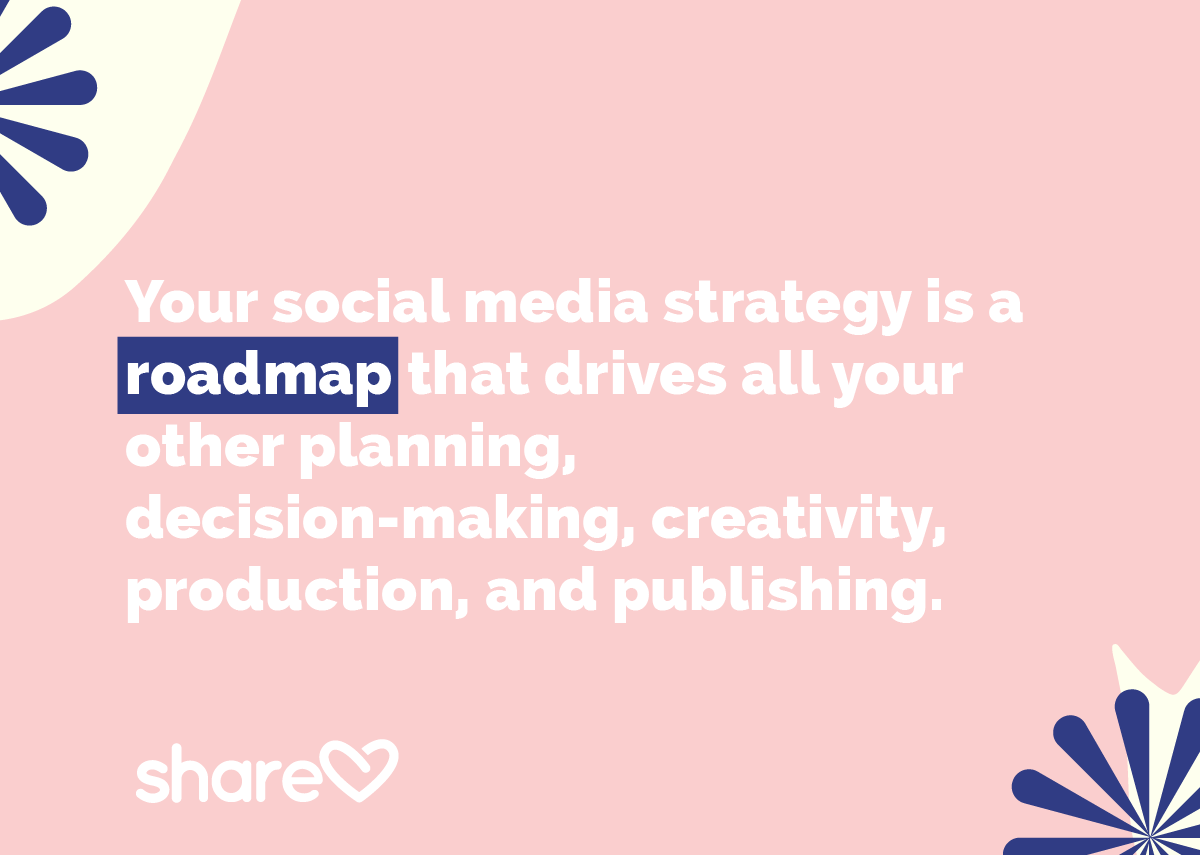





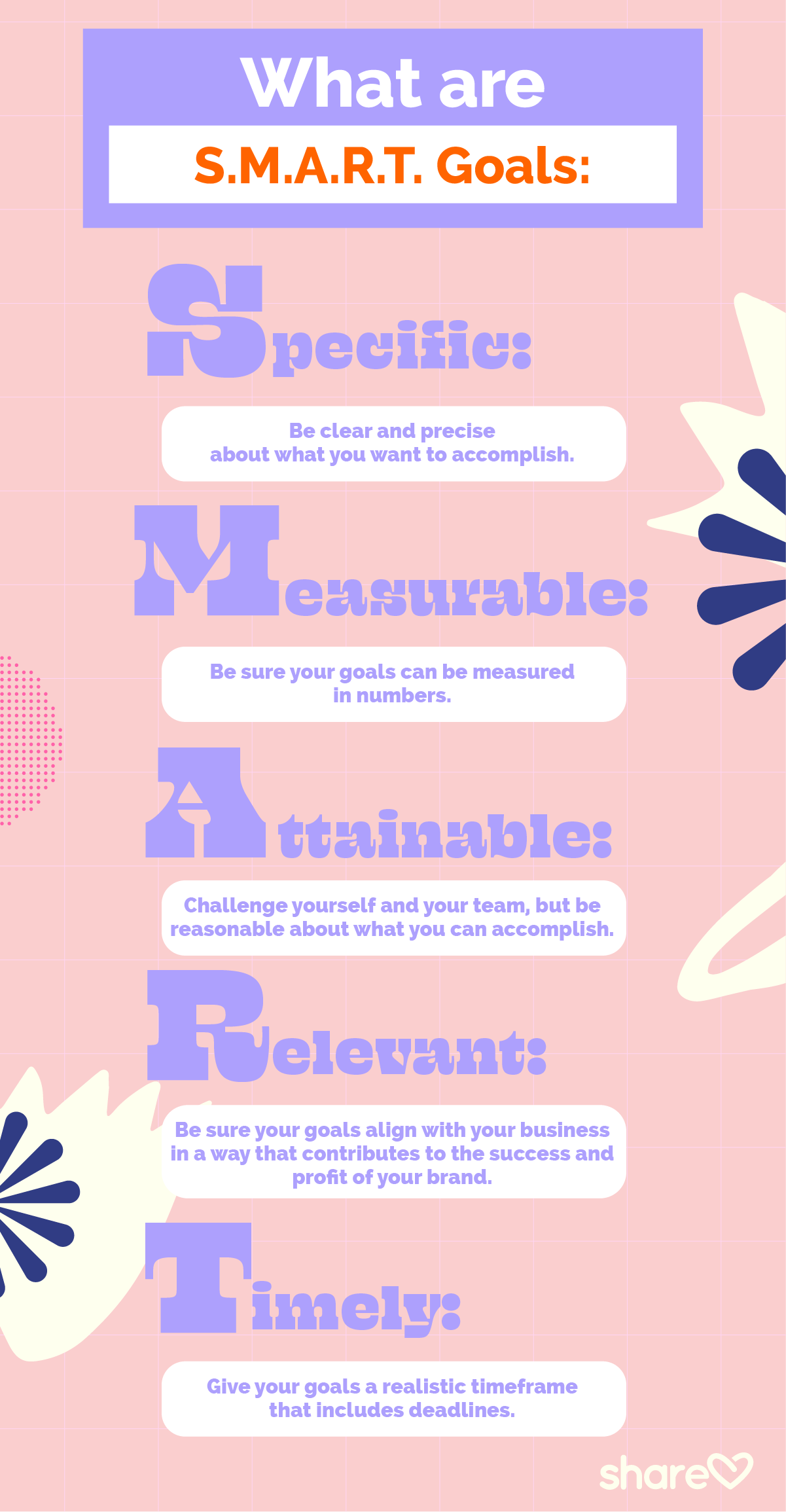


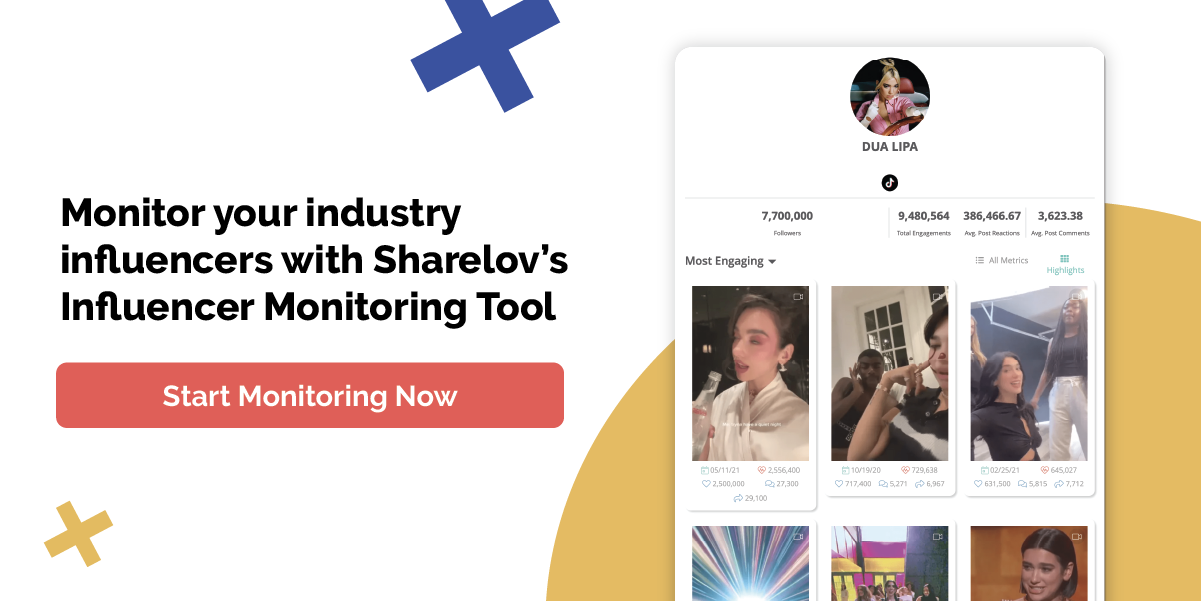

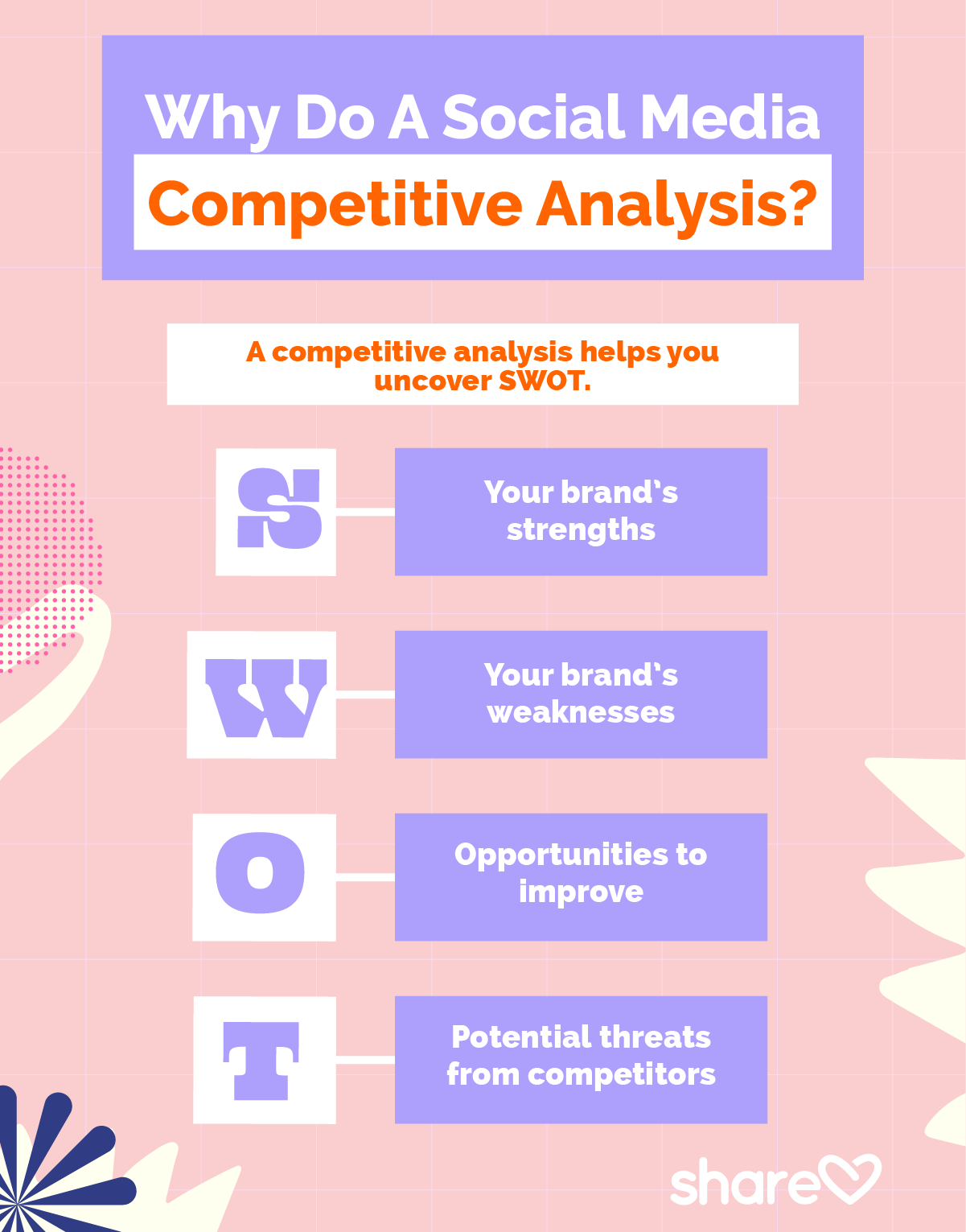



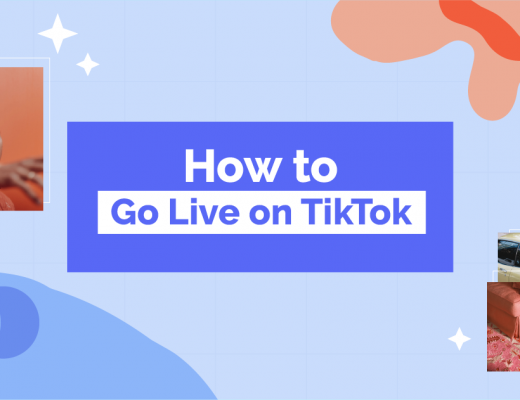
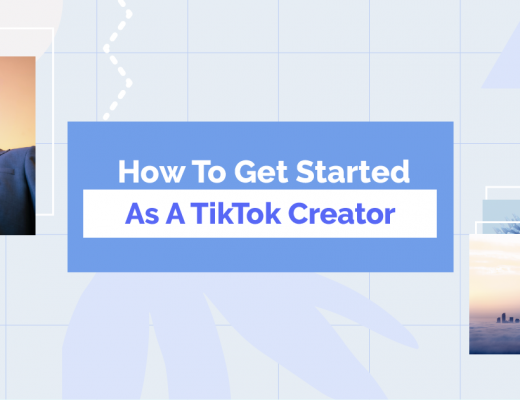
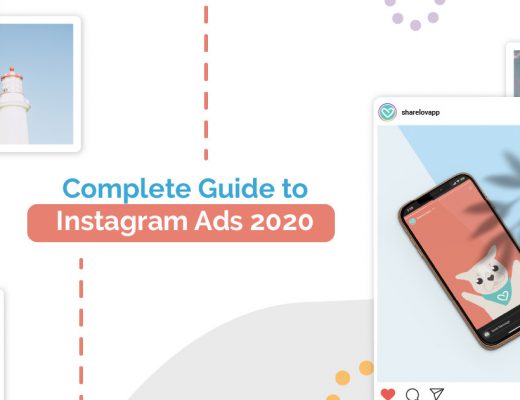


nice blog thanks for sharing this post
please visit my website
Thank you for all the insights. I found it really useful for my first campaign.
Social media marketing differs from content marketing in that it helps you directly market your business. so your post very important . so thank u so much dear sir.